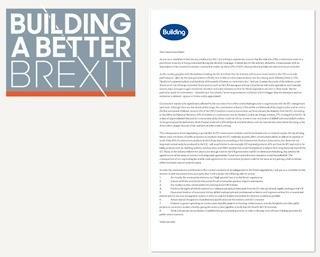Offering little new for construction by way of infrastructure commitments, the Tory manifesto nevertheless surprised with its brazen parking of tanks on Labour’s lawn - promising ‘a new generation of council housing’. But how solid is the policy? Joey Gardiner reports in the second of a weekly series of election specials

Last week’s Conservative Party manifesto contained, on the face of it, pretty thin gruel for the construction industry, with few new spending pledges to whet the sector’s appetite.
If the Labour Party manifesto was a three course Michelin-starred lunch with no one saying who was going to pick up the tab, then the Conservative document was more like a quick pizza bought by a friend. Not as exciting perhaps, but no nasty surprises when the bill comes round either.
The most immediately eye-catching policy for the sector was the heavily trailed pledge for a “new generatiton of social housing”, a seeming about-turn from a party that only a year ago, under David Cameron, was doing as much as possible to sell off council homes. So what does it all add up to?
Certainly, the manifesto contained little for contractors and consultants planning their pipelines of future work. The £170bn promised spend on infrastructure for the next parliament is simply what was pledged by chancellor Philip Hammond in the last Autumn Statement, while the £1bn 10,000-place prison-building programme was announced by former justice secretary Michael Gove under David Cameron. There is a promise to pump more money into health service capital projects – “the most ambitious programme of investment in buildings and technology the NHS has ever seen” – but no figures emerged, and given the raids on the NHS’s capital budget to date to pay for the day-to-day running of the service, not entirely reassuring. In fact, if anything, the manifesto reduces previous commitments to infrastructure projects: the 2015 promise to “push on” with Crossrail 2 was omitted from last week’s document.
The prime minister could do more to provide clarity on major projects not named in the manifesto, such as Crossrail 2 and nuclear power stations
Marie-Claude Hemming, CECA
This sparsity of new spending commitments won’t necessarily disappoint, given lots of good news for the sector is effectively “priced in” to a Conservative election win, such as the focus on infrastructure, low corporate taxes, and the go-ahead for Hinkley, Heathrow and HS2. Hence Marie-Claude Hemming, director of external affairs for the Civil Engineering Contractors Association, welcomed the document’s project commitment overall, but added pipeline uncertainty “could unsettle the markets or deter investors”.
“The prime minister [could] do more to provide clarity on major projects that are not named in the manifesto, such as Crossrail 2, the Swansea Bay Tidal Lagoon, and new nuclear power stations,” she said.
Given the lack of fresh policy elsewhere, the document’s housing package stands out. In addition to re-stating promises in the recent housing white paper, it pledges an extra 500,000 homes built by the “end of” 2022, support for construction of “high-quality, high-density housing like mansion blocks, mews houses and terraced streets” and help for housing associations to increase their specialist housing stock.
On council housing, the manifesto and associated press release pledge “thousands” of new homes built under “council housing deals” using low-cost capital funding. The really new part is that the homes constructed will ultimately be sold privately after 10-15 years (with tenants given first refusal). The cash is then recycled into building more. Melanie Rees, head of policy at the Chartered Institute of Housing, says that given the Conservatives’ usual antipathy to council housing, “we welcome the fact there’s a recognition councils can make a contribution to housing supply”.

However, the policy raises as many questions as it answers. Richard Parker, a strategic adviser who was formerly head of housing at PwC, says the commitment to sell the house at the end of the process means the public sector could actually make a profit on the provision of homes. But it is unclear what would happen to the tenant if they were unable to afford to buy the house at the end of the tenure, and whether the policy will provide any homes in addition to those being funded from a £1.4bn pot announced in last year’s Autumn Statement, given that – according to defence secretary Michael Fallon interviewed on the Andrew Marr show – there is no new money available.
What will happen in 10 years’ time when these tenants, on £20k a year, can’t find anyone to lend them any money?
Paul Hackett, Smith Institute
Overall, the lack of any affordable home target (next to Labour’s 500,000-home affordable housing pledge) has led to scepticism over whether the policy will do much to help those in need. Paul Hackett, director of the Labour-supporting Smith Institute think tank, says: “What will happen in 10 years’ time when these tenants, on £20k a year, can’t find anyone to lend them any money? This is just a political land grab from Labour but it looks like a scam.”
Former Local Government Association housing deputy Richard Kemp, now a Liberal Democrat parliamentary candidate, says: “Most councils don’t have housing departments anymore. The whole thing seems highly unlikely to me.”
However, a commitment elsewhere to “work with private and public sector housebuilders to capture the increase in land value created when they build” is raising eyebrows. The concept of using the value created by the granting of planning permission to pay for infrastructure has long been an aim for those on the left of politics – the idea being that in the current system landowners get an unearned windfall from planning, which should be shared.
Three attempts by Labour governments to introduce land value capture policies since the Second World War have all been rapidly repealed after landowners stopped bringing land forward for development – on the assumption a future Conservative government was bound to abandon the policy. But Hugh Ellis, head of policy at the Town and Country Planning Association, says the fact the Conservatives are bringing this idea forward means this dynamic could be avoided – landowners will bring land forward because they will know that no future Labour government is likely to repeal any legislation that had introduced a land tax. “It is very interesting that the Conservatives are interested in land value capture. Conservative support is a potentially really significant moment – but the difficulty is the Conservatives’ heartlands have a big stake in keeping the value private.”
The Conservative Party did not respond to requests for further information on its housing policies.
Immigration policy: work aplenty but who will deliver it?
Theresa May’s Conservative Party manifesto contained little to reassure parts of the industry concerned about the impact of Brexit on the ability of firms to recruit the staff they need to deliver the planned pipeline of UK work. The manifesto repeated the party’s failed promise from 2010 and 2015 to get net migration below 100,000 – with the departure from the EU providing for the first time a mechanism to potentially deliver this. However, with migration from outside the EU still far above 100,000 on its own, the policy requires a serious clamping down on migration overall, which the manifesto promises – increasing the wealth required to bring spouses into the country, and doubling the newly introduced £1,000 per year per employee charge on employers recruiting foreign staff under the visa system.
According to the RICS, 17% of construction’s workforce are already born outside of the UK, and 8% from the EU – a total of 176,000 jobs. Lewis Johnston, parliamentary affairs manager for the RICS, says there is a big question about whether many of the existing 8% will return home, let alone how employers will bring in further staff to deliver the planned £500bn pipeline of infrastructure projects. “The manifesto doesn’t say where the burden of reduced migration will fall,” he says, “but given construction’s reliance, it is likely to be hit particularly hard. It could mean projects not being delivered, delays and increased costs in construction, meaning the government’s ambitions could be in jeopardy.”
The manifesto does say that a Conservative government would align its visa policy with its industrial strategy, implying the most in-need skills would be prioritised. However, the construction industry in itself was not identified in either the industrial strategy green paper or the manifesto as a priority sector.
Mark Farmer, founder of consultant Cast and author of the Modernise of Die report, said the message from the manifesto was that the industry needed to modernise quickly to reduce its reliance on more labour. “It’s about the industry getting its house in order – there will be no special measures [to help] construction. I suspect the industry will have to plan for the worst.
I don’t think there’s much support within government for a sector continuing to rely on outdated modes of delivery.”
Construction’s voice
Over the past week Building had an impressive response to its election survey to gain a deeper understanding of the industry’s voting intentions and views on a range policies that will have an impact on construction. The results of this survey will be revealed next week, so watch this space.
In the meantime, we would also like to capture the views of non-UK residents who are not eligible to vote in this general election. So please email building@ubm.com with your views of the main political parties and their pledges on a range of topics from public spending to immigration.
Contact your candidate
You can download this model letter to your constituency candidates by clicking here.
The letter summarises construction’s importance to the UK economy and calls on election candidates to consider the key demands in the Building a Better Brexit manifesto.
A list of the candidates is available from the official political parties’ websites, along with contact details. Feel free to add local examples of important construction projects or related issues – we would also be interested to hear about these local stories, so please email us building@ubm.com.





























No comments yet